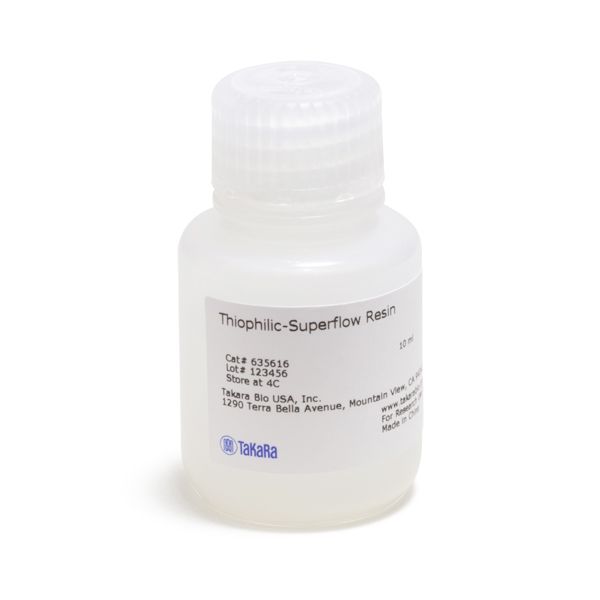Thiophilic-Superflow Resin
Thiophilic-Superflow Resin
Antibody purification resins—an alternative to Protein A
Thiophilic-Superflow Resin is an adsorbent for large-scale or FPLC purifcation of various proteins, including IgG, IgM, IgY, and IgE antibodies. Superflow allows for flow rates of as high as 5 ml/cm2 min.
Overview
Thiophilic-Superflow Resin utilizes thiophilic adsorption chromatography. With this technique, protein adsorbs to a sulfone thioether ligand. The adsorption of different proteins can be promoted by adding different salts to the mixture. Varying the concentration of the loading salt can affect the adsorption affinities of IgG, IgM, IgA, Fab and Fc fragments, and C3 and C4 complement factors.
Purification with Thiophilic-Superflow Resin offers several advantages over purification with Protein A, the conventional method used for immunoglobulin purification:
- Purification at neutral pH
- Broader selectivity (IgY, IgM, IgE, scAb)
- High linear flow rates
- High capacity (15–20 mg Ab/ml resin)
- Reusability
- Higher stability of the purified product
Applications
- Antibody purification, including IgG, IgM, and chicken IgY
Purification using Thiophilic Resin vs Protein A

Purification using Thiophilic Resin vs Protein A. Purification with Thiophilic Resin allows elution in any buffer with pH 7.0. In contrast, Protein A requires elution in a buffer with pH lower than 7.0. Protein A also requires a dialysis step, which can be omitted with Thiophilic Resin.
Single-chain antibody purification with Thiophilic Resin

Single-chain antibody purification with Thiophilic Resin. SDS-PAGE analysis of the following samples: bacterial lysate expressing scFv215 (Lane 2), periplasmic fraction (Lane 3), peak fraction from Ni-NTA (Lane 4), and peak fraction from Thiophilic Resin (Lane 5). (Schulze, R. A. et al. (1994) Anal. Biochem. 220(1):212–214. Permission to reprint obtained.).
IgY purification from chicken egg using Thiophilic Resin

IgY purification from chicken egg using Thiophilic Resin. Panel A. SDS-PAGE analysis of fractions from purification of chicken egg immunoglobulins. Lanes 7 & 10 each contain 10 mg of protein, and all other lanes contain 25 mg each. Lane 1: egg yolk extract supernatant. Lane 2: Supernatant after 60% SAS (Saturated concentration of Ammonium Sulfate). Lane 3: Wash with 60% SAS. Lane 4: Pellet after 60% SAS. Lane 5: column load. Lane 6: unbound material. Lane 7: eluted material. Lanes 8–10: purification with another thiophilic resin. Panel B. Immunoblot using 1/10 the amount of material in Panel A. IgY was detected with polyclonal rabbit anti-chicken HRP-conjugate. M=molecular weight. (Hansen, P. et al. (1998). J. Immun. Methods 215(1–2):1–7. Permission to reprint obtained).


